Understanding Leave No Trace on the River
As paddlers and adventurers, the river is our playing field. Many of the rivers that we have the privilege of recreating on have been permanently protected thanks to the Wild & Scenic Rivers Act of 1968. This act was passed to preserve certain rivers for their outstanding natural, cultural, and recreational value in their free flowing state. To sustain outdoor recreation for generations to come, it is our responsibility to be stewards of river environments near and far. While all rivers are life-giving and important, those rivers on which we recreate deserve our utmost care and safeguarding. We take this responsibility seriously at ROW and always strive for the high water mark in minimizing our impact on natural environments.
Leave No Trace (LNT) is one of the leading outdoor organizations in protecting our natural environment. The organization provides tangible skills, research, and education to help people take better care of the outdoors. Leave No Trace has created a benchmark for human behavior in the outdoors by outlining 7 principles to follow when recreating or traveling through natural areas. The organization’s website offers a wealth of information and easy-to-follow recommendations that can be applied to all sorts of outdoor pursuits and are a strong focus of ROW Adventures’ operations.
LNT’s principles can be applied to any adventure, whether it be on a multi-day Wild & Scenic River trip through remote wilderness, or on a hike in your nearby state park. Before going out on your next trip, revisit the following principles and apply them accordingly in an effort to better care for the outdoors.
Understanding How to Apply the 7 Principles of Leave No Trace Within a River Corridor.
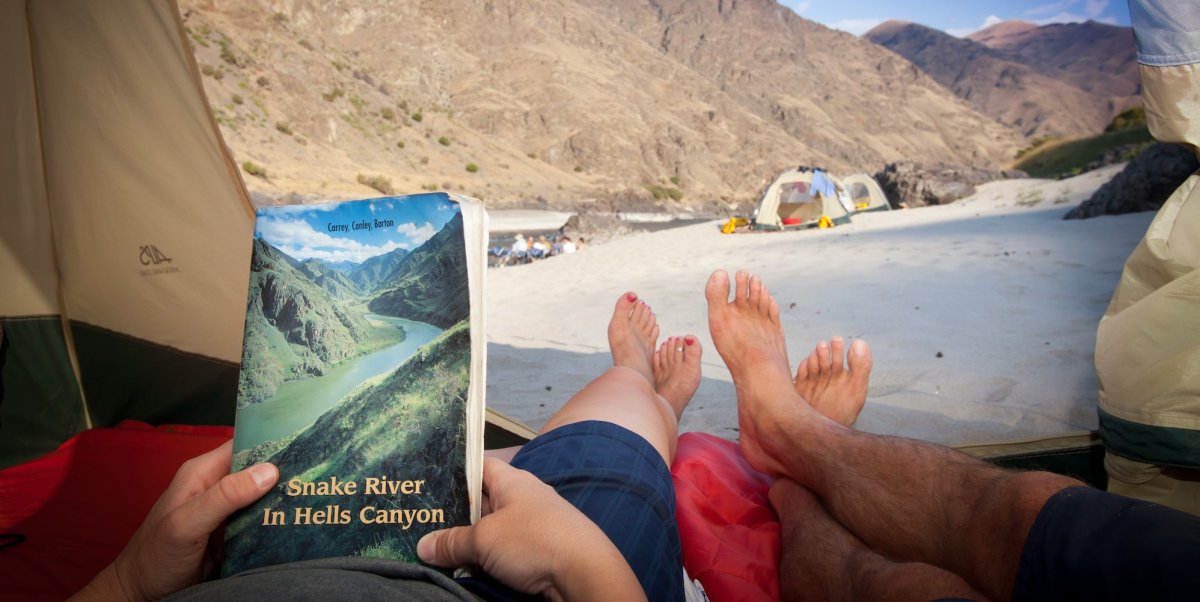
1. Plan Ahead and Prepare
Every river you run is going to have different risks, regulations, and permit requirements, so it’s essential that you plan ahead to ensure not only your own safety but also the well-being of the environment you are entering. It’s when you’re not prepared that you put yourself and others at greater personal risk and are more likely to cause degradation to natural resources.
Before you venture off, always check the weather conditions and pack for the worst-case scenario. If you’re going on an outfitted and guided trip, carefully follow the packing list you have been given as it has been created with the experience and knowledge of those who have gone before. If you’re rafting independently, it’s a good idea to carry a guidebook for the river, which will offer lots of information about what you can expect and the challenges you may encounter.
Being well prepared not only means you have a greater chance of enjoying your trip and achieving your goals on the river, but you will do so with greater confidence and comfort. Without lingering thoughts that you’ve forgotten something or don’t have the equipment for what lies ahead, you’ll open yourself up to really enjoying the natural wonders that are around you.
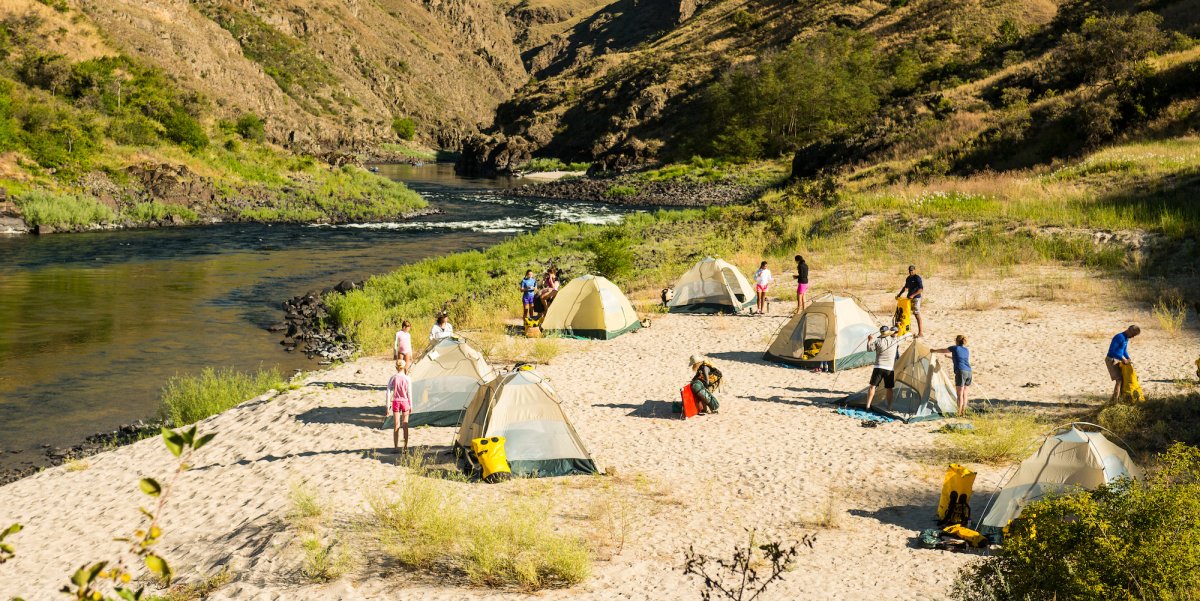
2. Travel and Camp on Durable Surfaces
We can significantly minimize our impact on natural resources by being conscious of our movements, both during the day and at night. Some rivers have marked trails, while others don’t. When trails are marked, be sure to stay on these in order to reduce disturbance to the surrounding environment. Game trails can also be a good alternative, as animals have already created the impact and thus rather than adding more, keeping to those helps preserve the soil and minimize impact. Going off trail, as tempting as it may be, may disrupt the ecosystem that surrounds the trail.
When trails are not clearly defined, only traverse surfaces that can withstand wear or will remain in a relatively stable condition under foot, such as rock, sand, and gravel. If you do have to tramp across vegetation, opt for areas that are sparsely vegetated and avoid steep slopes where the impacts of off-trail movements are magnified.
Many of the rivers we operate on have designated campsites to help mitigate impacts. On rivers where this is not the case, selecting an appropriate campsite is one of the most important things to consider when it comes to minimizing your environmental impact. Be aware of the fragility of the underlying soil and the vegetation, as well as the effect your campsite may have on local wildlife.
Where present, you should always avoid walking across or camping on living soil (e.g crypto-biotic soil), which comprises communities of organisms that appear as a raised crust on the sand. They are highly vulnerable to human movements and can be destroyed with a single footstep. If you do need to travel across living soil, look for rocks to hop across or follow exactly in the footsteps of the person before you. This type of soil is most commonly found in desert regions and the Great Basin ecosystem including two rivers we run, the Owyhee and Bruneau.
If you’re participating in a guided multi-day trip, try your best to stick to the layout of camp your guides have set up for the group, as they take this all into account when choosing and setting up camp each night.
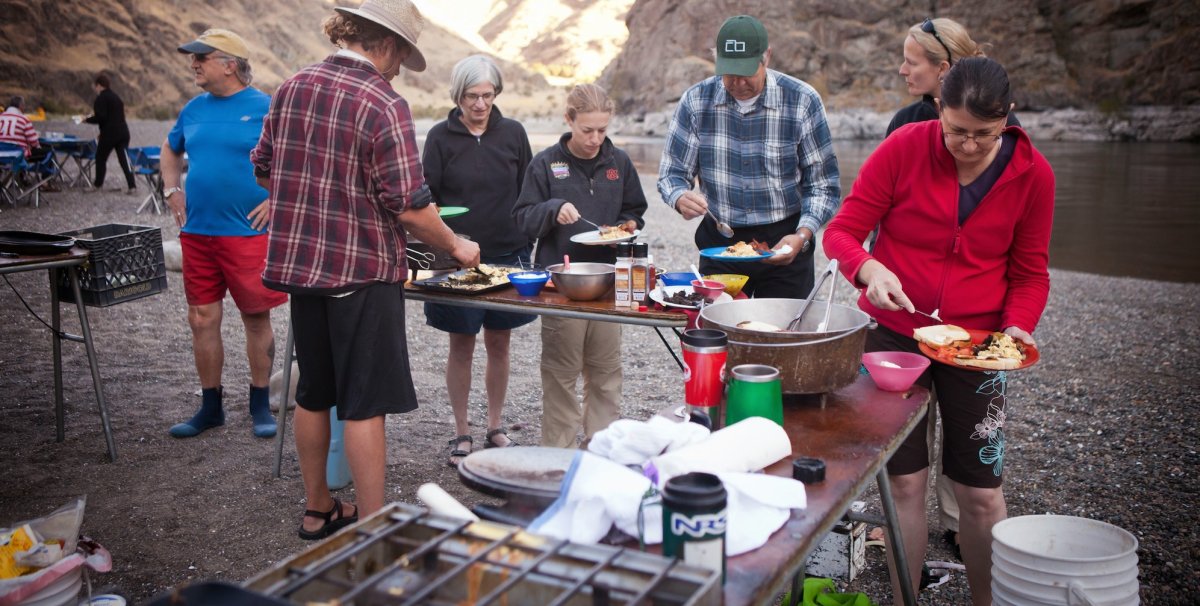
3. Dispose of Waste Properly
The waste created by humans is one of the most visible signs of impact in natural areas and is unarguably aesthetically displeasing. By leaving rubbish or human waste along hiking trails and river beds, you can negatively impact not only the enjoyment for other rafters but also the safety of the wildlife that calls the area “home”.
It’s for this reason that the groover was invented, resulting in rafters carrying all of their human waste out from the wilderness areas they explore. It means other rafters don’t have to stumble across your human waste (particularly at popular riverside campgrounds) and you don’t run the risk of potentially spreading disease.
While urine doesn’t have a direct impact on vegetation or soil, it can attract animals that will dig up the soil or damage vegetation. So instead of urinating on land, on larger rivers and creeks (above 500 CFS) it’s best to direct your stream into the river where it will be diluted as it washes downstream. In this case, the solution to pollution is dilution.
It goes without saying that all garbage needs to be carried out with you and this goes for any leftovers and grease. Always carry enough plastic bags with you to remove trash and leave the area in the pristine condition you found it. At ROW, our guides are very careful to pick up crumbs or small food scraps that may have fallen in the kitchen or around camp. We always welcome guests to help us in the effort to collect this so-called “micro-trash” as even small trash can have a large impact! Be sure to search the area around your tent too.
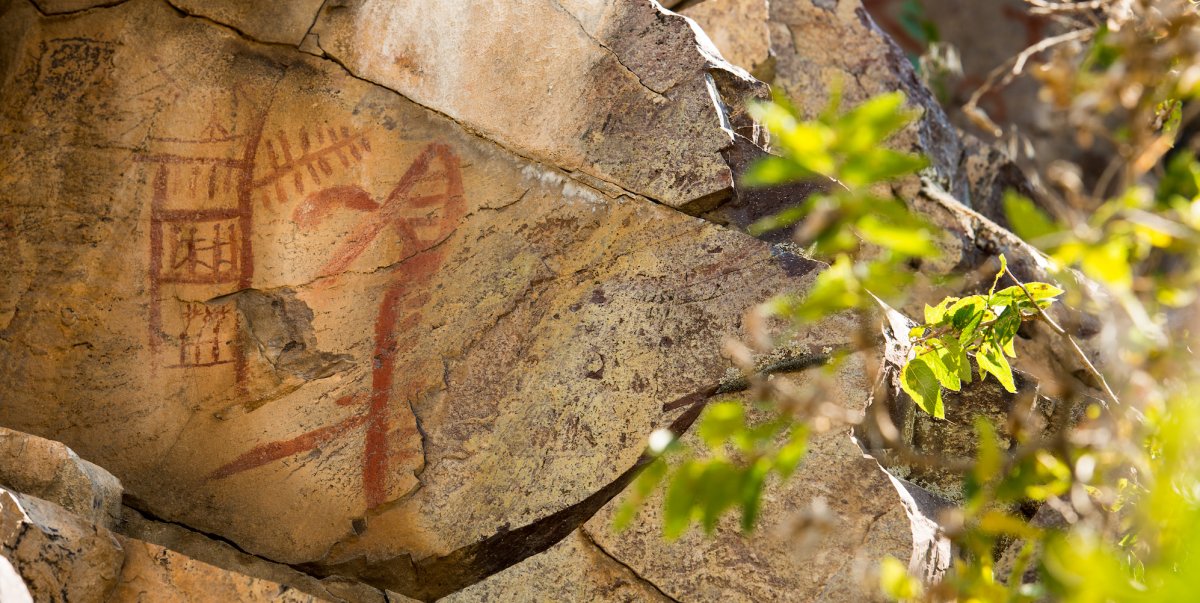
4. Leave What You Find
It can be tempting to pick up natural “souvenirs” as a memento of your time in the outdoors, such as colorful rocks or beautiful pieces of petrified wood. But in most protected areas, it is illegal and at the very least inconsiderate, to do so, no matter how insignificant or in abundance the object may seem to you. This is so that others can appreciate the environment and its natural objects in all of their glory. The same applies to cultural artifacts, which are protected in the United States by the Archaeological Resources Protection Act. Removing any natural or cultural resource from its home environment has the ability to greatly impact the ecosystem at large as well as the experience for other people, in ways you cannot always see or predict.
This Leave No Trace principle can also be applied to the alterations you make to sites for your own comfort or enjoyment. Wherever possible, avoid clearing areas for erecting tents or girdling trees to attach guy ropes and hammocks. On most rivers fires are built in fire pans in order to contain ashes and avoid damage to the earth. However, if a fire ring has already been created where it’s legal to do so, leave it in place to prevent a new one from being made (and causing further damage). Remember, the best campsites are found spaces rather than human-made sites. If you move rocks to tie up your raft, or anchor a tarp, be sure to return them to where you found them.
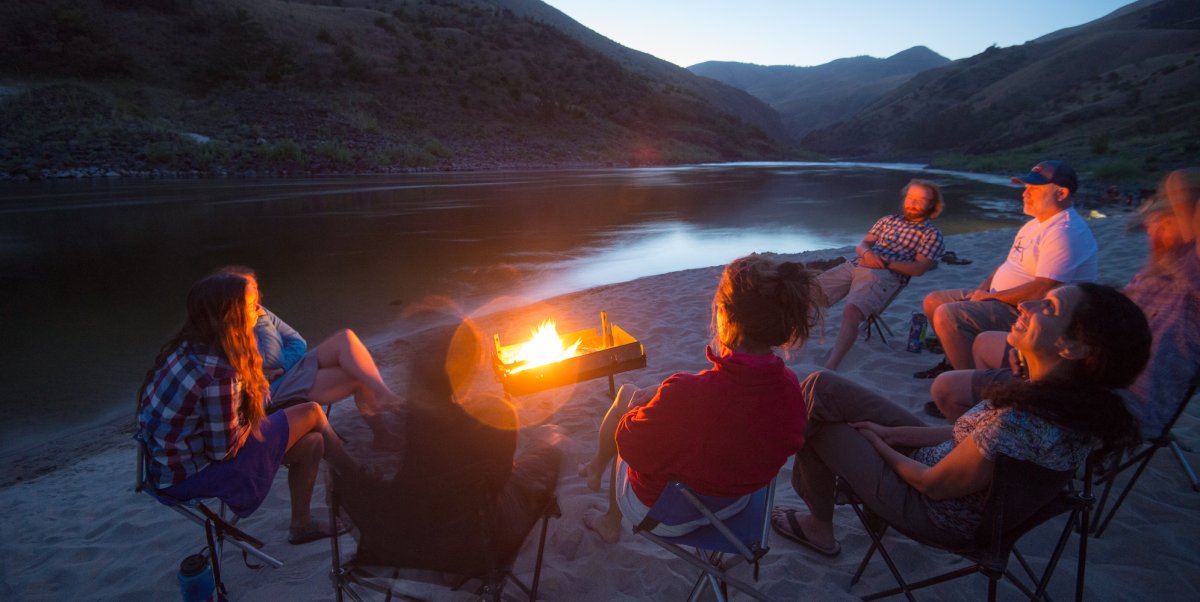
5. Minimize Campfire Impacts
For many people, a campfire is an essential ingredient for overnighting in the outdoors, as well as being an important means of keeping warm and cooking. But in most wilderness and protected areas, there are strict regulations about when and where you can have campfires. Always check the relevant resource website so you are informed before you go.
It’s particularly important to be aware of when fire bans are in place, as this is when the risk of wildfires is at its most extreme. With the effects of climate change, wildfire seasons are changing and increasing in some areas and fire ban regulations will follow suit.
If you do want to light a fire outside of burn ban season, use a fire pan - a metal tray with rigid sides that is elevated off the ground, using rocks or metal legs, to prevent the ground from being scorched. This also makes it easy to collect your ash and take it with you when it’s time to leave (something that everyone should be doing, regardless of whether you are required to have a fire pan or not). Be sure to scatter your firewood when you leave to ensure your campsite is left in its natural state.
Lightweight and efficient camp stoves are a good option for reducing your impact on the natural environment. Not only are they fast to heat up and flexible in their use but they will fire up in almost any weather condition. They also prevent the detrimental effects of sourcing in-situ wood resources for stoking campfires. If you do use wood found in the corridor, only use drift wood and never disturb vegetation, whether or not it is alive.
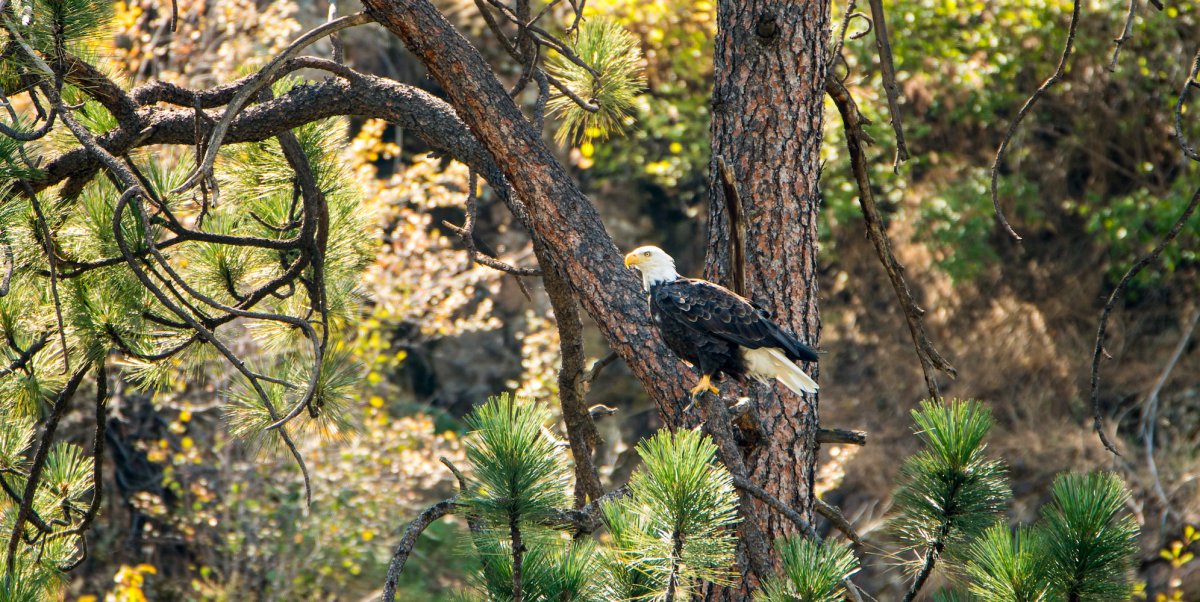
6. Respect Wildlife
Observing animals in their natural environment is one of the great pleasures of visiting wilderness areas, and the best way to do so is quietly and respectfully. It can be tempting to disturb wildlife to try and get a closer look or to use noise to “grab their attention” for the sake of a photograph. But this can be stressful for many creatures and should be avoided at all costs. The only exception is when exploring "bear country" where a little noise can help them to understand you aren’t prey.
Never try and touch, pick up, or feed wild animals, not only for their safety but also yours. Animals harboring diseases may bite or scratch you in distress, resulting in a trip to the hospital and the end of your wilderness adventure. If you do come across an animal that is sick or in trouble, notify a local ranger or warden as soon as possible.
Respecting wildlife is also about storing food properly so that they aren’t tempted to break into your camp and eat it. Never leave food lying around and always clean up after cooking. You should also give animals a wide berth around water sources so that they feel safe and secure while rehydrating.
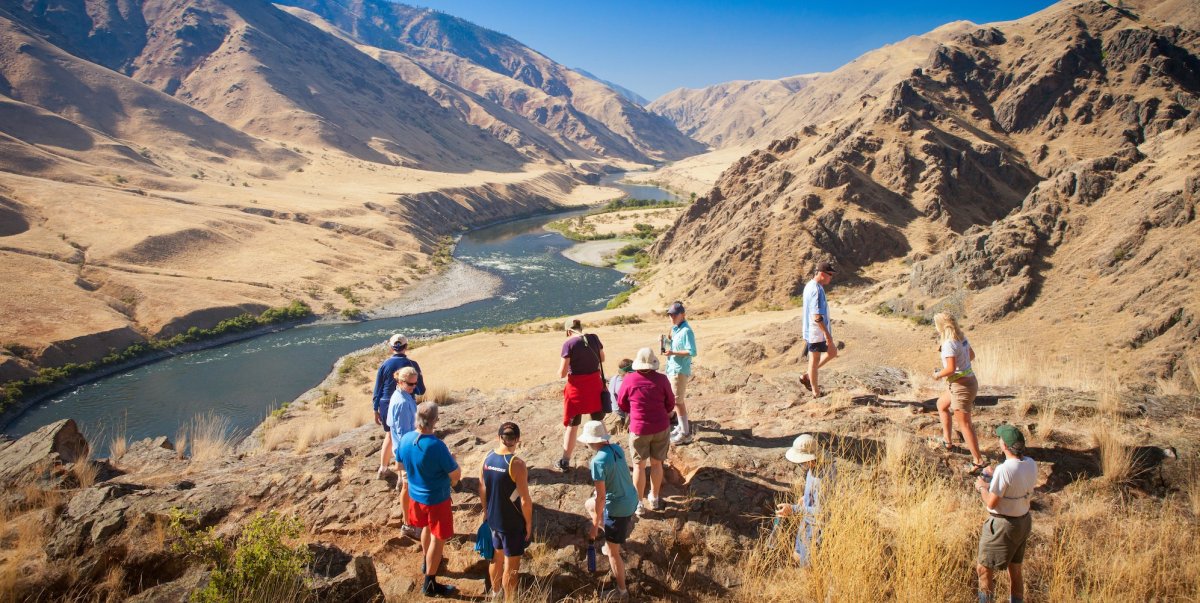
7. Be Considerate of Others
Last but not least, it’s important to be respectful of other humans who are coming to enjoy the outdoors and connect with nature. Avoid making excessive noise or behaving in a way that could detrimentally impact their experience. If you do want to listen to music, opt for earbuds as many people prefer nature’s music.
When it comes to finding campsites, leave larger spaces for larger groups and never pitch your tent at a scouting or lunch break spot. If possible, invest in a natural-colored tent that isn’t going to be visible from long distances or through the foliage.
On the river, slower boats should pull to the side and let a faster group pass. If you are going to pass another group, try to do so in a tight grouping and pass efficiently. Be aware that some types of boats are less maneuverable or may not be able to slow down or stop, like a fully loaded cargo or sweep boat. On rivers with motorized boat traffic, human-powered crafts have the right of way. Remember that everyone is sharing a resource and the goal should be to have fun and let others enjoy their experience to the fullest too.
A careful balancing act:
The way we choose to approach our time in the outdoors can help to lessen our impact and can even have positive knock-on effects. By experiencing wild places, we are more invested in their long-term survival and doing what it takes to protect them.
It’s this that drives the way we conduct business at ROW Adventures, with our mission being “Sharing Nature - Enriching Lives”. Our sustainability principles outline the way we choose to operate and our commitment to the philosophy of Leave No Trace. We also believe in the importance of supporting communities by employing local guides, and donating money to local charities and conservation groups.
Conserving our rivers is not just about protecting the natural environment but working collaboratively with the people and organizations who are dedicated to their survival. As stewards of the land, it’s important that we continually educate ourselves about ways we can better interact with the natural world and ensure it is there for future generations to enjoy. On your next river trip, be sure to “Take only pictures, and leave only footprints.”



